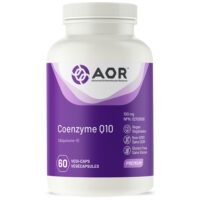When your house has a gas leak, you know it – right? Well, that all depends on what gas it is. When the natural gas reserves in your house leak, you can smell it so you know there’s a problem. However, like many other gases, carbon monoxide has no smell, taste or color, so there’s no way for us to detect it ourselves. In the United States alone, carbon monoxide causes over 2000 deaths a year and makes countless others sick. That’s why it’s important to know what carbon monoxide is and how to protect your family.
So, why is carbon monoxide so dangerous? Everyone has something in their blood called hemoglobin. It’s what binds with oxygen and carbon dioxide so that we can transport it through our bodies. The problem with carbon monoxide is that it binds with the hemoglobin so there’s nowhere for the oxygen to bind. If enough carbon monoxide binds with our hemoglobin, we can’t get enough oxygen for our body’s cells to work right.
Unlike natural gas, carbon monoxide isn’t something brought into your house that leaks; it’s something that is formed there. Carbon monoxide is formed from the incomplete oxidation of carbon dioxide. Usually carbon monoxide builds up as a result of a faulty appliance or ineffective ventilation of an appliance or other flame, like a fireplace. Carbon monoxide build-up can come from anything where combustion takes place including a furnace, water heater, space heater, stoves, and car or other motor vehicles.
While a small number of people do die from carbon monoxide poisoning every year, this only occurs at high concentrations. Lower concentrations can leave you feeling fatigued or even make you sick. Common symptoms of carbon monoxide poisoning include: headache, dizziness, confusion, nausea, impaired vision, and in people with heart disease, chest pain from angina.
The problem with carbon monoxide poisoning is that it is very hard to distinguish from many other diseases. The patient will likely be tested for many possibly options before the real cause of the symptoms is found, if at all.
So, what can you do to protect yourself from carbon monoxide poisoning? The best defense is to buy a carbon monoxide detector. It is an inexpensive device similar to a smoke detector; however, just like a smoke detector, you need to remember to change the batteries and test it often to be sure it is actually working.
Many people buy a carbon monoxide detector and call it good, but there’s more you can do to protect yourself and your family:
* Have furnaces inspected and upgraded.
* Have your flu regularly cleaned and inspected. Always be sure the flu is open before starting a fire.
* Use proper fuel and ventilation with space heaters and stoves.
* Never run your car or anything with a combustion engine inside a garage or other indoor area. You can also get significant buildup of carbon monoxide if you live near a busy road or highway.
Taking these small precautions will cost you some time and money, but your family’s health is well worth the effort.








